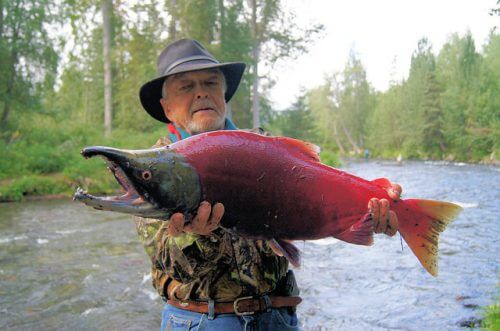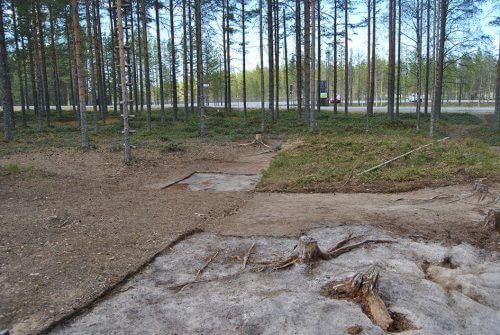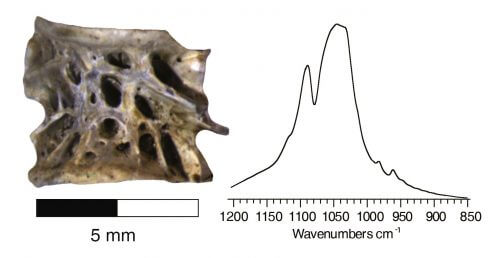A new method for identifying salmon remains using mineral markers developed at Haifa University sheds light on the Late Stone Age in the frozen Arctic Circle, according to a new study published in the journal Scientific Reports. "The new method we developed will allow researchers to better understand life in the ancient Arctic region and the way of life in the seam between the hunters' society and the transition to permanent settlements," said Prof. Ruth Gross, who led the research

A new method for identifying salmon remains using mineral markers developed at Haifa University sheds light on the Late Stone Age in the frozen Arctic Circle, according to a new study published in the journal Scientific Reports. "The new method we developed will allow researchers to better understand life in the ancient arctic and the way of life in the seam between the hunters' society and the transition to permanent settlements," said Prof. Ruth Gross, who led the study.
Aquaculture, centered on the salmon fish, has been a central part of the Scandinavian and North American countries in the Arctic region for the last few centuries and up to the present day. Archaeologists who specialize in the Arctic region assumed until today that salmon fish was also central to the ancient inhabitants of these regions, but so far very few empirical findings have been found that indicate that salmon fish was indeed part of the ancient diet of the inhabitants of the Arctic region. According to a post-doctoral researcher from Prof. Gross's research group, Dr. Don Butler from the Department of Marine Civilizations at the Leon Charney School of Marine Sciences at the University of Haifa, to date evidence has been found of a type of fence whose function was to block the rivers inhabited by fish The salmon and apparently to make their fishing easier, however the fish bones were hardly ever found. "Of the thousands of settlements that lived along the rivers in Finland for thousands of years, only 6 salmon bones have been found to date. Arctic archaeologists explain this by saying that the salmon bone dissolves in the acidic soils typical of the Arctic region, so we don't actually have direct evidence in the form of large quantities of salmon bones at archaeological sites that the inhabitants of the Arctic region really fished and ate salmon to the extent known to us from historical evidence," said Prof. Gross.
She added that the importance of salmon today in Scandinavia, together with the extreme paucity of bones made the issue of utmost importance to local researchers and archaeologists. However, despite the investment in thousands of archaeological excavations, the attempts to answer the salmon riddle have come to naught.

Now, with the help of the method developed by Prof. Gross and Dr. Butler, a solution is possible. The method is based on laboratory experiments that showed that in salmon bones burned in a fire, unique minerals containing magnesium are formed, and that these minerals are unique only to fish of the salmon family. For comparison, the researchers tested the minerals created by burning the bones of other animals from the Arctic region, such as reindeer and a variety of local fish species. After it became clear that the mineral marker is unique only to salmon fish, the researchers contacted an archaeologist from the University of Helsinki in Finland, Dr. Sato Koivisto, and conducted joint research on an archaeological site that was 5600 years old. As part of the collaboration, the researchers received from Israel 3 of the 6 salmon bones found in archeological excavations over the years in Finland, and in the laboratory tests it was found that the unique marker does appear in them.
After confirming that the mineral can be preserved for thousands of years, the researchers turned to one of the ancient settlements on the Iijoki River in Finland, where they sampled ash from a bonfire found inside a 5600-year-old dwelling cabin. Back in the laboratory, the test revealed that the unique mineral signature of the salmon was indeed found in this ash, in the form of many crumbs that cannot be identified by fish bone researchers, which indicates that the residents did fish for salmon in this area and consumed it as part of their diet. The presence of the burnt salmon bones in the fire indicates that meal waste was thrown into the fire for reasons of hygiene. "Until now we have had evidence of seal hunting on the site. And since the seal season is in the winter, we knew that the village was populated in the winter. Now we have evidence of salmon, when the fishing season is summer. That is, the settlement was inhabited throughout the year. Since this is the period of transition between a hunter-gatherer society and a society of permanent settlement, we now know to say that 5,600 years ago in the ancient village near the river Iijoki, there were already settlements that became permanent settlements", concluded the researchers.

In a broader view, the fact that the method developed at the University of Haifa works will allow archaeologists of the Arctic region to collect direct evidence regarding the consumption of salmon in the past and to reconstruct both the depth of time of the reliance of human societies in the Arctic region on salmon as a major source of nutrition, and the daily life of thousands of years ago . In addition, using the new method will make it possible to examine the interrelationship between man and salmon fishing, and it will also be possible to examine the effect of the interrelationship between man and salmon on the ecological systems of the rivers in the arctic regions.

3 תגובות
"Aquaculture, centered on the salmon fish, has been a central part of the Scandinavian and North American countries in the Arctic region for the last few centuries and up to the present day. "
All true except this is not aquaculture but fishing.
As wild fruit gathering is picking and not plantation farming.
Aquaculture centered on Salomon is something that started in the 20th century.
Their diet is not the diet that is a temporary situation
interesting,
Only the caption under the picture should be corrected
Because the fish in the picture is of the red goddess species
A species not a "species"... Because "breed" is a concept from agriculture or farm animals
In zoology there is a classification into types, species and sometimes subspecies,